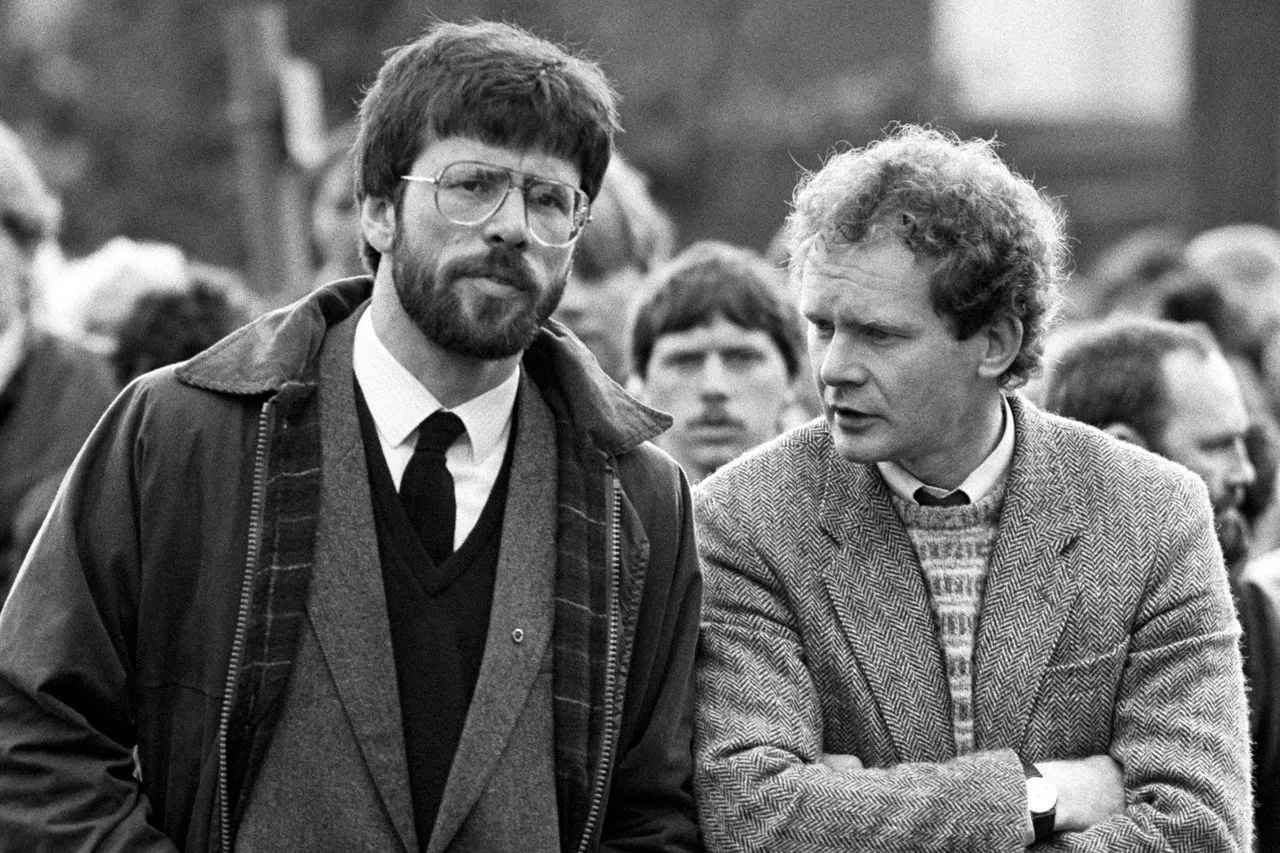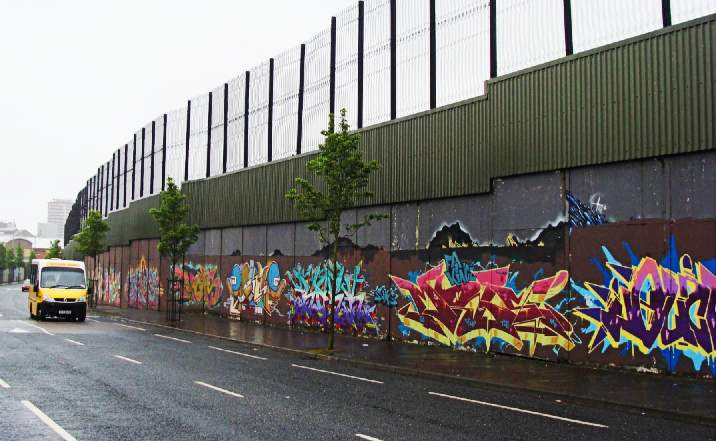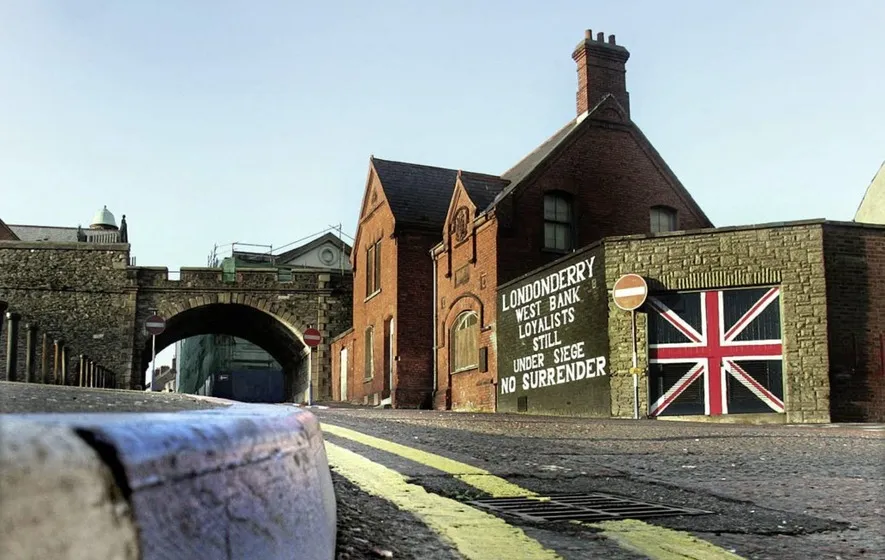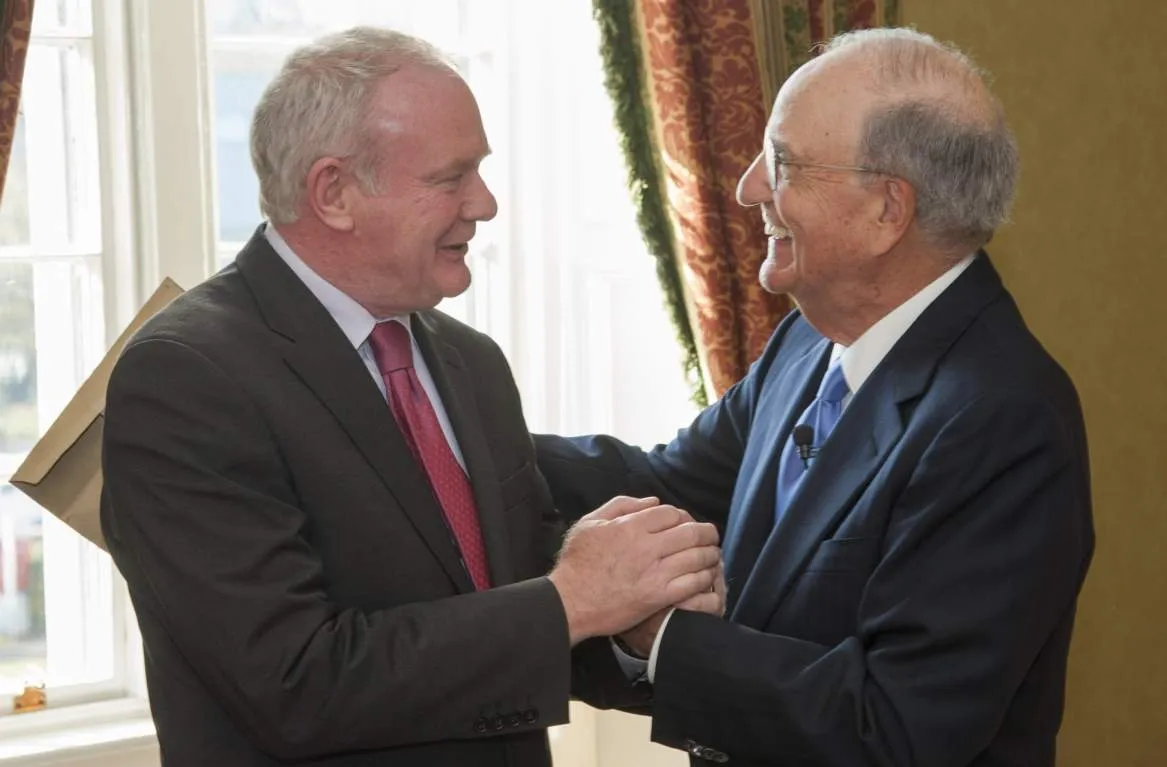Operation Chiffon: How MI5’s 'Backchannel' Spycraft Helped End a War With the IRA
An MI5 officer took it upon himself to tell the IRA what they wanted to hear about Irish unity during unauthorized peace talks - misrepresenting his Queen and country to stop the violence. He’d risked his life. Now he just had to come clean to the security services.
Twenty-five years after the US-brokered Good Friday Agreement in 1998 ended three decades of bloodshed during ‘The Troubles’ in Northern Ireland, an extraordinary tale of one MI5 officer’s role in history has finally been revealed.
“I’d like what I did to be remembered,” the British intelligence officer, known only as Robert, told the BBC’s Peter Taylor. “No one is going to know what it is like for me and how it came about because it is all locked away in the files of the Security Service.”
What’s been hidden is the story of an MI5 officer gone rogue - a man who disobeyed his superior’s order in the 1990s to back off from negotiations with the Irish Republican Army (IRA). Instead, Robert met IRA paramilitaries alone, putting himself at risk of being kidnapped or killed, so he could help lay the groundwork for a peace deal to end a war that had claimed more than 3,000 lives.
It’s a fascinating insight into how the security services negotiate behind the scenes with hostile adversaries.

The US signals a policy shift in Northern Ireland
America’s involvement in Northern Ireland was stepped up in the mid-90s when President Bill Clinton granted a 48-hour visa to Gerry Adams, leader of the IRA-affiliated political party Sinn Féin. The policy shift elevated Adams’ standing, dangled the prospect of US financial aid, and helped Sinn Féin sell peace to IRA war hawks. Behind the scenes, MI5’s Robert was also using top-secret backchannels to end the war, but it wouldn’t be easy. Ireland’s history is as complicated as its politics.
Essentially, the partition of Ireland in 1921 left Northern Ireland as part of the UK, with a population divided between the mainly Protestant unionists, who wanted to remain in the UK, and Catholic nationalists, who wanted Northern Ireland to unite with the Republic of Ireland in the south. The tension led to violence and the erection of more than 100 ‘peace walls’ in the ‘70s to separate warring factions.
There were atrocities on all sides including 1972’s Bloody Sunday when British soldiers killed 14 Roman Catholic civil rights supporters during a demonstration in Londonderry (Derry), Northern Ireland, leading to a surge in IRA support. Britain’s security services opened up top-secret backchannel in the 1970s - covert talks to explore ways to end the war - and 20 years later they were still talking to contacts close to the Army and Martin McGuinness - then a senior member of the IRA leadership.

"The brand new social experience where you activate your gaming skills as you train like a spy."
- TimeOut
Take on thrilling, high-energy espionage challenges across different game zones.

Operation Chiffon, Peace Walls, and The Troubles in Northern Ireland
MI5’s Robert was in charge of British backchannel negotiations in the early ‘90s, running top-secret Operation Chiffon. At that point, 3,200 people had died in The Troubles and Britain wanted the IRA to agree to a ceasefire and begin peace negotiations. Although McGuinness indicated through backchannels that the IRA was willing to talk, the violence carried on.
After two young boys died in the IRA’s Warrington bombings in Cheshire, England in early 1993, some in the British government believed they were wasting their time trying to broker peace. Robert’s boss told him to cancel face-to-face talks with Martin McGuinness. Instead, Robert decided to go it alone, figuring he needed to make a bold move to secure peace - even if that meant Robert was defying the British security services and his country.

MI5’s secret talks with the IRA’s Martin McGuinness
Robert met McGuinness in early 1993 in Derry, Northern Ireland. It was gutsy. Although Robert had no authority to speak for the British, he bluffed his way, saying: “The final solution is union…This island will be as one.” It was exactly what the IRA wanted to hear. Robert had implied Britain had a secret policy to work toward Irish unity - even if it wasn’t true - and opened the door to peace talks.
Elated, Robert told his MI5 boss, John Deverell, he’d found a way forward. Instead of congratulations, Deverell created a cover story leaving Robert out of it. Instead, they’d say that one of MI5’s spies was involved in exploratory IRA talks, certainly not MI5.
“Yes, I misled the prime minister so I misled the Queen as well,” Robert said. “It was a hard and really very unpleasant thing to have on your conscience. I felt very alone.”
Two months later, with no positive follow-up from the British (even Prime Minister John Major didn’t know what Robert had done), the violence resumed. After MI5’s London HQ heard rumbling about a secret meeting in Northern Ireland, Deverell, Robert’s boss, called him one evening. The media were about to blow the story wide open, embarrassing the British government. Robert realized it was time to quit.

Senator George J. Mitchell, architect of the Good Friday Agreement
Robert was out of a job in ‘94 and the Irish peace process was effectively dead, but the IRA still wanted the union between Northern Ireland and the south. They wanted Ireland to be one country and began wondering: what if the IRA offered a ceasefire in exchange for the start of peace talks? Was the offer still valid? Slowly, things began moving again.
In 1995, Bill Clinton appointed US Senator George Mitchell as Special Envoy for Northern Ireland. “It was obvious from the word ‘go’ that (Senator Mitchell) was a mature and seasoned statesman, a major player with abilities far in excess of those normally seen in Northern Ireland,” said David McKittrick, The Independent’s Belfast-born journalist.
Mitchell convinced all of the paramilitary groups to decommission their weapons. He also chaired the landmark Good Friday Agreement in 1998, which led to the Northern Irish Assembly legislature at Stormont. For his work, Mitchell was nominated for the Nobel Peace Prize.
Mitchell didn’t act alone, of course. British PMs John Major and Tony Blair participated in the peace process, as did paramilitaries and many others including an MI5 officer known only as ‘Robert’ who set the stage.
“This country, Ireland, north and south, we owe him a great deal,” said Brendan Duddy, a businessman who was also a key part of the backchannel negotiations along with MI5’s Robert. “If he hadn’t done what he did, we could still be hearing the bombs going off.”
SPYSCAPE+

Join now to get True Spies episodes early and ad-free every week, plus subscriber-only Debriefs and Q&As to bring you closer to your favorite spies and stories from the show. You’ll also get our exclusive series The Razumov Files and The Great James Bond Car Robbery!


Gadgets & Gifts
Explore a world of secrets together. Navigate through interactive exhibits and missions to discover your spy roles.
Your Spy Skills
We all have valuable spy skills - your mission is to discover yours. See if you have what it takes to be a secret agent, with our authentic spy skills evaluation* developed by a former Head of Training at British Intelligence. It's FREE so share & compare with friends now!
* Find more information about the scientific methods behind the evaluation here.


Stay Connected
Follow us for the latest
TIKTOK
INSTAGRAM
X
FACEBOOK
YOUTUBE